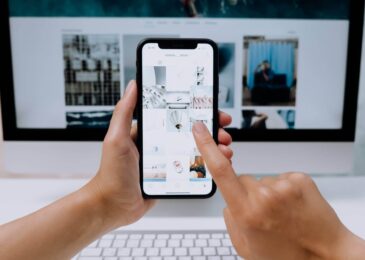Top 10 Google Material Design Frameworks 2019 For Web Apps
Material design is the visual impression of a material creatively designed with the help of technology. Google Material design, launched in 2014 is a special design language created for Google’s Android operating system which we use in our smartphones.
Google’s material design concept fills up the gap between the digital world which is growing day by day and the physical world. Made for Android devices, the material design language creates a good foundation for user interfaces.
Material design concerns with the physical appearance but is not a UI kit or a collection of interfaces. However, this framework has changed the rules of designing interfaces for tabs, smartphones, likely known as Android devices in the most productive manner.
Are There Any Benefits Of Google Material Design Frameworks?
Google’s material design language have several benefits to web designers and developers who create user interfaces for web applications. A few important advantages of Google material design frameworks in 2019 are as follows:
- It supports the Android platform for both UI and UX.
- The design principles create a high-quality user interface and enable the virtual feel of the objects.
- Google material design provides a set of rules that enable developers to create easy to use and engaging interfaces.
- The language also creates animation interfaces and the motion attributes for the devices we use in our daily life.
- Google material design framework is a graphical interface compatible with all Android platforms.
- Also, it is a cost-effective tool and much easier to use.
Let’s see the Top 10 Google Material Design Frameworks 2019 For Web Apps:
Materialize Material Design Framework:
Materialize, a mobile-first framework comes up with code examples to help anyone get started quickly and easily. It has two different versions; first, a standard Materialize version (CSS + JavaScript files) and second is the Sass version (contains the source SCSS files).
Being detailed documentation it helps you design efficiently with the framework and get working with it. The documentation is descriptive and enables you to implement your web app project with Google Material Design.
Read More: Top 8 WordPress Web Development Trends of 2019
Angular Material Design Framework:
Angular material design framework built by the Angular team works seamlessly while giving you reusable components. The code documentation for Angular material is widely used in top custom website design services in USA to copy and paste into your web and app projects.
Its vast collection of components helps in the smooth implementation of the material design into your any Angular application.
Since Google designs all the material components for the web, you can expect this particular design framework to follow every single guideline. With regular and frequent updates, the documentation helps you follow the strict design guidelines that get easily integrable with Angular, React, and the server-side rendering.
Material Design for Bootstrap:
Bootstrap, the world’s one of the most popular front-end development framework helps in creating web applications and web-based apps. The open source framework material design for Bootstrap create components with material design language; a kind of embedding.
The framework’s documentation is a good way to start with Google material design frameworks! If you are already a user of Bootstrap, then for you it is easy to make use of Material Design for Bootstrap.
Material:
Material is yet another best material design framework based on front-end framework. This design framework uses Bootstrap 4, which is the latest version of the front-end framework.
It follows the material design guideline and implements the looks seamlessly to the Bootstrap components. Its documentation guides us through every aspect of the Google design framework to help you in creating your project hassle-free.
Material Components For The Web:
Material components for the web is one fine and intuitive material design framework designed by the designers and engineers at Google. It is the successor of Material Lite, which is neither developed or supported by Google anymore.
However, if you use Material Lite, then you can get community support for this framework.
Material Foundation:
As the name suggests, Material Foundation helps you create web applications using the front-end framework foundation in combination with Google’s design language, Material Design.
This framework is an excellent piece of work from the Foundation framework creators. Moreover, it helps to include those Foundation components that follow the guidelines of Google Material Design.
Unlike Bootstrap, Foundation never gives you finished and polished components. Instead, it provides you with a foundation which gives you a room of infinite possibilities in customization.
The same is the case with Material Foundation design framework. It gives a base which blends Material Design and the Foundation framework such that you haven’t to create anything from the ground up, but at the same time, it gives flexible customization power.
Surface Material Design Framework:
Surface, a purely lightweight CSS framework on Google Material Design, doesn’t include JavaScript. Many of the Material UI components get created with no JavaScript.
Thus, there is only one minified file of size 5.7KB that makes Surface a fast loading framework. It supports most of the popular web browsers and is highly customizable.
Material-UI Material Design Framework:
If you use Facebook’s React framework, then Material UI is going to win your interest. Actually, not only yours but many designing services known as cms website development services.
Thus, if you wish to use material design as your design language, then Material-UI is the best framework as it is open-source, which easily integrates into your project.
MUI Material Design Framework:
MUI is the best lightweight CSS framework that creates a quick loading web application. The frameworks combined file size (CSS + JSS) amounts up to 12KB with no external dependencies and also supports React. The Sass (Syntactically awesome style sheets) makes this framework very easy to customize.
MUI is a cross-browser that works flawlessly and is compatible with our hand devices. Maybe, this is the reason why there is an open-source framework under MIT license.
Lumix Material Design Framework:
This framework helps to implement the material design based on Angular JS. The framework has a dependency on jQuery, but to achieve better performance, its plugins aren’t used.
Lumix, built with Sass and Bourbon makes customization very easy while when using Gulp with Lumix, you can automatically optimize your javascript files and Sass. The documentation of the Lumix framework has well-briefed code examples that help in more understanding of Google material design framework.
Google’s Material Design took the online internet designing world by storm. As a result, there are many amazing designed applications which any company providing web development services can use to create an attractive, interactive, and user-friendly web app designs in 2019.
Author Bio:
James Burns is the Founder and CEO of CMS Website Services, a globally ranking web, and mobile app development company. With 10+ years of experience in designing, development, implementation & maintenance of high quality global redundant, compliance-ready applications, network and Data Centers for private and Govt organizations, he has all solutions to your IT problems as a tech-business person.
Read More: Importance of Web Designing and Marketing for Small Businesses






